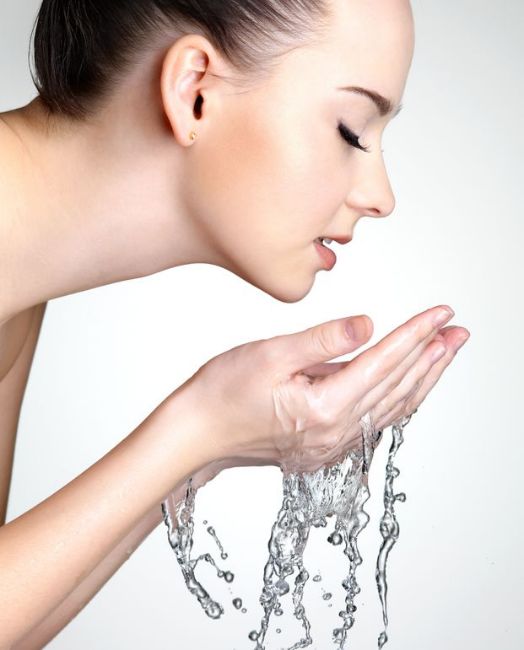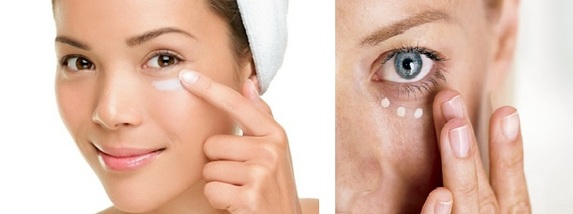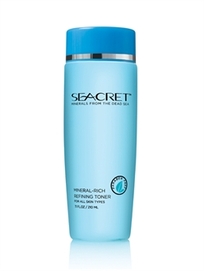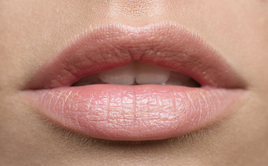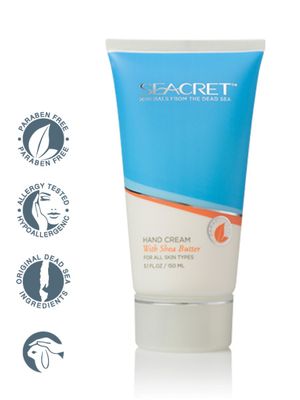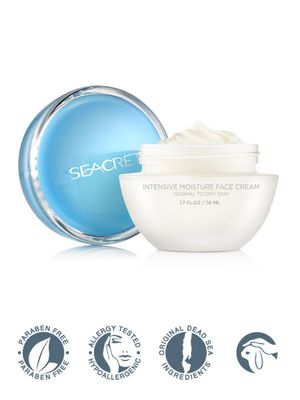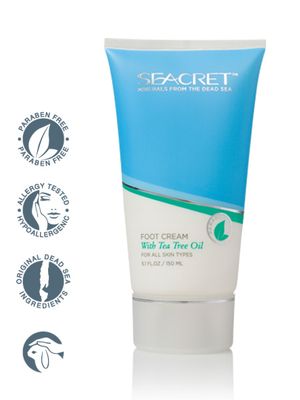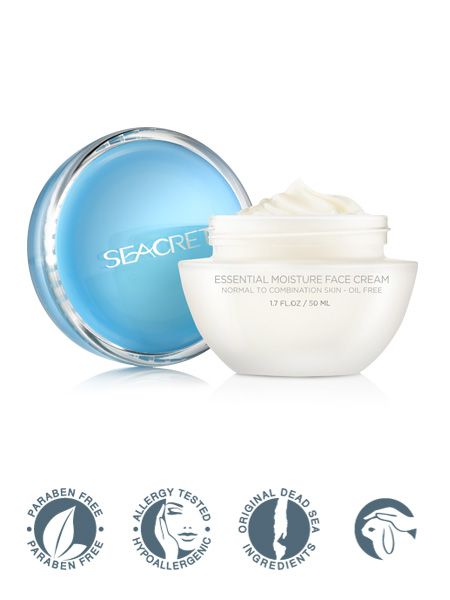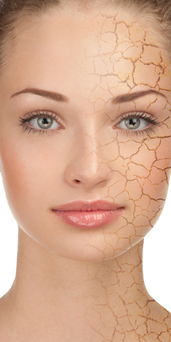by Angela Tague 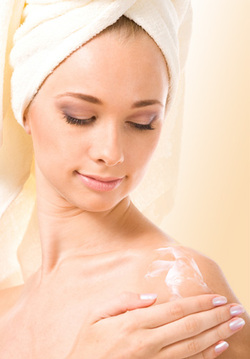 During the dry winter months, body lotion can be a lifesaver. It moisturizes dry legs, heals chapped hands, and soothes dry feet. But are you applying the lotion correctly? Although you can rub on lotion whenever you want, the American Osteopathic College of Dermatology recommends prepping the skin before using lotion.
Getting Ready & Exfoliating Dry/Dead Skin
Before grabbing your favorite body lotion, spend some time in the shower or bath tub. Use warm water--not hot--to maintain your skin's natural oils. Then cleanse yourself with a soft natural sponge or washcloth. Use a pumice stone to remove calluses and dry skin from the soles of your feet. Also, a salt scrub will work wonders in removing dead skin cells which block moisture absorption. A warm soak of 15 minutes or less will dilate your pores and make them ready to accept a moisturizing body lotion. Lightly towel dry your skin, leaving a few water droplets behind.
Applying the Lotion
Apply the lotion within three minutes of exiting the bath or shower to get the most absorption from your lotion. Use a water-based lotion on areas prone to acne or blemishes. Try an oil-based lotion on dry skin. I like using SEACRET's Pomegranate, Ocean Mist, or Milk & Honey Body Butter. In addition to being ideal for hydration and moisture, it restores that healthy glow to your skin. Also, a little goes a long way.
More Application Tips
Rub the lotion into your skin using a circular motion so you go over the same area a few times. This works the lotion deep into your pores. Make sure to moisturize all areas that will be exposed to the sun, which can draw moisture from the skin. Don't forget to use body lotion on your neck, ears, and arms. If your skin is extremely dry, consider installing a humidifier in your home and increasing your daily intake of water.
by Michele Bender for iVillage 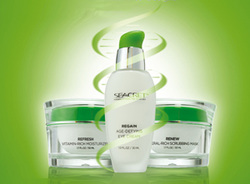 1. Have Patience With New ProductsYou come home from the store excited about a new product's ability to smooth your wrinkles, lighten your brown spots and clear up your acne. But a few days in, the lack of results leaves you frustrated. So you toss it and try another. "Switching products and changing up your skin care routine too quickly can create issues like redness, irritation and breakouts, and make it difficult to find the root cause of your skin problems," explains Mitchell Chasin, M.D., a dermatologist and medical director of Reflections Centers for Skin & Body in New Jersey. You've got to give a new product a chance. "A good moisturizer will yield results immediately, but other products, such as those containing lightening agents or an acne-fighting topical product might take a month or more for appreciable results to be seen." Wait four to six weeks to gauge results -- it takes that long for skin cells to turn over.
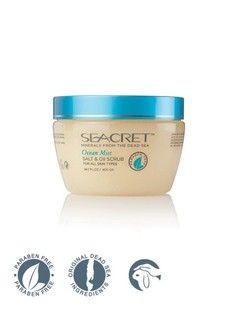 2. Remove Dead Skin CellsThe skin's ability to slough off dead cells slows down considerably once you hit the big 3-0. After that, you need to help it along. "Regular exfoliation eliminates the layer of dead skin cells that accumulate over time, revealing fresher, more supple-looking skin," says Dr. Chasin. "Exfoliating also allows topical products such as retinoids and moisturizers to be better absorbed by the skin." Choose between chemical exfoliants, like salicylic or glycolic acid, or a mechanical one, like a granular scrub. Apply it to clean, damp skin using gentle circular motions with your fingertips. Boost skin's hydration level by exfoliating two to three times a week in the shower before applying moisturizer. "This way [moisturizer] can be absorbed more efficiently because dead cells, which can block penetration, are sloughed off," says Fusco. Exfoliating also helps the skin better absorb other products -- like wrinkle creams and acne fighters -- and it gives skin a more youthful glow.
| 3. Establish A Skincare Routine
Your skincare regimen shouldn't take longer than an episode of "Modern Family." In fact, you should be able complete it in the time it takes for one -- maybe two -- commercial breaks. "We recommend that every patient use a high-quality cleanser, moisturizer and sunscreen," says Chasin. Depending on the type and condition of your skin, you can add treatment products like retinoids (for wrinkles and acne), antioxidants (to prevent sun damage and aging) or an acne fighter (like benzoyl peroxide or salicylic acid). "The goal is to keep things as simple as possible so you have an easy regimen that addresses your skin care issues," says Chasin. "Sometimes you can wind up over treating and doing more harm than good." Chasin suggests finding one skincare line you love and stick with it. "While it's okay to mix and match products from different lines, products from a single line have been formulated to work together," he says.
| Discover Your Regimen |  4. Eat Plenty Of Healthy Fats
You've probably heard about the heart-healthy impact of omega-3 fatty acids, but their benefits also go skin deep. "Many skin issues, including psoriasis, eczema and some acne, are made worse -- redder, angrier and more puffy -- by inflammation in the body," explains Susan Blum, M.D., assistant clinical professor of preventative medicine at Mount Sinai School of Medicine and founder of The Blum Center for Health in Rye Brook, New York. "Omega-3's reduce that inflammation." The body also needs these fats to help produce its own natural oils and retain moisture for soft, hydrated skin. You can find these good-for-you fats in salmon, sardines, walnuts, flaxseeds and soybeans.
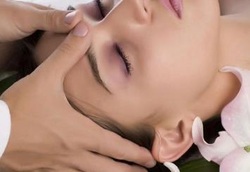 5. Rub Your Skin RadiantA facial massage can "smooth away laugh lines, crow's feet and wrinkles on the forehead, as well as provide the skin with a deep glow and nourishment," says Pratima Raichur, N.D. ayurvedic physician and spa owner. Author of "Absolute Beauty: Radiant Skin and Inner Harmony Through the Ancient Secrets of Ayurveda," she suggests using sesame, almond or olive oil for dry skin, sunflower oil for combination or sensitive skin, or safflower for oily skin. Move your middle finger clockwise for 20 to 30 seconds to massage these spots on your face:
-- The center of the chin and corners of mouth
-- The bone between the nose and upper lip
-- The outside corners of the nose where the nostrils flare
-- The center of the cheekbones
-- The temples and the forehead between the brows (called the third eye)
Instead of a using the massage technique on the delicate parts of your face, you can light press them with your finger tips for the same result. With your thumbs, press upward on the inside corners of eyebrows at the bridge of the nose, and then move to the lower lids above the cheekbones. Finish by gently pinching your eyebrows with your thumb and forefinger, moving from the inside out.
6. Apply Products Like A Professional
Ever wonder why spa facials feel so good? It's not just the products they use, but the application techniques. To avoid stretching or damaging your skin, Raichur says do not scrub your face or apply any products in an up and down motion. "Cleanser should be massaged in gently, using upward and outward circular motions," explains Raichur. Eye care products should also be applied to the skin in a circular direction from the outside corner of the eye to the inside, using the ring finger to ensure the gentlest touch. When it comes to moisturizing, lightly swipe lotion on your face -- massaging it too deeply can clog pores.
| 7. Change With The Seasons
Your clothes, mood and activities change with the seasons -- so should your skincare. In the winter, cold temps and high indoor heat dry your skin. "Really dry skin diminishes the natural barrier between the skin and the environment because the skin cells separate from each other and dry out," says Kenneth Beer M.D., a board certified dermatologist in West Palm Beach, Fla. "So winter skin needs a cream moisturizer to repair it." This isn't the case in summer. In fact, a rich cream would not only feel heavy in warm weather months, but when combined with sweat could clog pores and cause breakouts. You're better off with a lighter lotion in the summer -- even one that's oil free since skin isn't as dry. These seasonal rules should be applied to the whole body, too.
| | 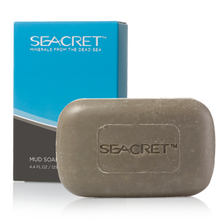 8. Go Soap-FreeSoap and cleanser ingredients, like sodium lauryl sulfate, strip skin of the skin-softening oils it produces called sebum. "This can leave skin dry, red and irritated," says Fusco. Instead, wash your face (and body) with a soap-free and sodium lauryl sulfate-free cleanser made for your skin type. These products still clean your skin but without dehydrating it.
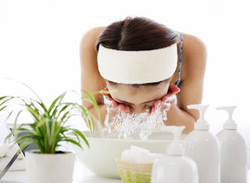 9. Stay Vigilant Against AcneIt's a myth that acne-prone skin is dirty skin. Breakouts are caused by bacteria, oil and/or clogged pores, and can actually worsen if you over wash. The key to a clear complexion is treating acne-prone skin daily, not just when a pimple pops up. "This helps keep pores clean and control bacteria," says Ranella Hirsch, M.D., a Boston-based dermatologist. Use a cleanser both in the morning and at night. (For dry or sensitive skin, use a creamy cleanser; for oily, use a gel formula). During a time you typically break out (before your period; when you're stressed), Dr. Hirsch advises leaving a cleanser on your face for five to 10 minutes and your back or chest for 10-15 minutes.
10. Use Facial Wipes & TonerKeep them in your car, gym bag and by your bed so you can clean your skin even if you're not near a sink. Use a toner to remove dirt and makeup that can combine with sweat to cause breakouts. Keep them by your bed so you can wipe off your makeup on nights you're too tired to go to the bathroom sink. | 11. Treat Your LipsThey're skin, too! Your lips need the same TLC as the rest of your face, like exfoliating, moisturizing and sun protection. "Dry, chapped lips can make you look older," says Katie Rodan, M.D., associate clinical professor of dermatology at Stanford University and author of "Write Your Skin a Prescription for Change." And severely dry lips can crack and get infected. Exfoliate lips gently with a lip scrub, toothbrush or washcloth. Re-apply lip balm often throughout the day and wear sunscreen any time you go outdoors. |  12. Get Moving
The benefits of exercise go beyond lean thighs and flatter abs. "Exercise increases circulation so nutrients can get to the skin better," says Dr. Malik. This helps heal skin conditions like acne and aids in giving you a glow. "Exercise also reduces the stress hormone epinephrine which causes constriction of blood flow and that can make you lose your glow," adds Malik. Just wash your face before and after you workout to keep pores clear of sweat and dirt.
 13. Get Your Rest
Quality sleep is the key to more energy, better concentration and a boost in your mood. It also sends under-eye bags packing and keeps dark circles at bay. And sleep just may be the fountain of youth: "Neurotransmitters that keep you young, like growth hormone and serotonin, are released in the brain while you sleep," says Malik.
| 14. Eat Your Way To Healthy Looking Skin
Certain vitamins do a complexion good. Vitamin C can help with collagen production and protect against sun damage, so fill up on kiwis, strawberries, oranges and bell peppers. Beta-carotene, found in sweet potatoes, carrots, and other orange veggies, is a nutrient that's converted to vitamin A in the body, also known as the indispensable anti-aging retinol. To hydrate your skin, choose vitamin E-rich foods like broccoli, nuts, sunflower seeds, olives and spinach. Vitamin E is also believed to help reduce sun damage.
| 15. Hydrate Your Skin"Moisturizing the skin helps plump it up, making it look smoother -- at least temporarily," says Rodan. Dry skin highlights wrinkles: Think of a grape versus a raisin -- the only difference is water. Put moisturizer on daily within three minutes after washing your face. "For optimal hydration, blot skin with a towel and apply moisturizer to damp skin to lock moisture into it," adds Fusco. And always moisturize before applying makeup --way it acts like a primer, creating a smoother surface and filling in any fine lines so makeup doesn't settle into them. |
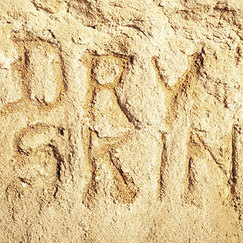 Dry skin results when the skin loses its natural moisture, due to factors like, harsh weather, cosmetics, poor nutrition, pollution, aging and frequent washing. The natural oils or moisture on our skin acts as a protective barrier to prevent dry skin and skin irritation. When the skin loses its moisture, it feels rough, besides getting easily irritated. To protect the skin and retain its moisture, we can use different types of skin moisturizers like, body lotions, cream and body butter. Out of these, body lotion has low to medium viscosity, while body butter and body cream are much more viscous than body lotion. Many people often get confused whether body lotion or body butter is suitable for them. Many times, they simply assume that both the products are same, and thus end up with the one that is not suitable for their skin type.
Body Lotion and Cream
Body lotion is basically a moisturizer, prepared by combining water and oil, and is usually lighter and non-greasy. Therefore, our skin can readily absorb body lotions. Lotions can effectively moisturize the skin, and they are ideal for moisturizing all skin types including, moderately dry skin. They are non-greasy and so, can effectively moisturize the skin during summers. Body creams are not so different from lotions, as they are also a combination of oil and water. The main difference between these two products is that, body cream has a thicker consistency than body lotion.
Like lotions, body creams can be absorbed by the skin easily and it does not feel greasy. Some body creams can however, contain greasy ingredients. Creams are generally good for moisturizing the skin during winters. The choice between the two depends on your skin type as well. Those with relatively drier skin can benefit more from body creams than body lotions. 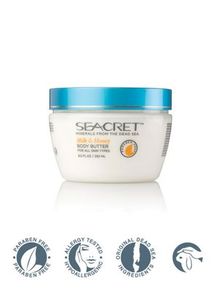 Body Butter
If your skin is extremely dry, you can try another product, known as body butter. As compared to both body lotion and cream, body butter is a more intense skin moisturizer. Body butter can moisturize the skin intensely and maximize skin hydration. It contains natural ingredients like, cocoa butter, shea butter, which are beneficial for the skin. For making body butter, the seeds and nuts are ground or cold pressed to extract oil from them. The resultant product is much thicker or viscous than both body lotions and creams. This is the reason why, body butter can form a protective layer over the skin to prevent the loss of moisture.
Which is Better?
As mentioned already, body lotion is a light moisturizing product, which is prepared by combining oil and water. Both the components are bound together with the help of an emulsifier. The skin readily absorbs body lotions, and they provide much-needed hydration and moisture to the skin. During summers, lotions are the best products for keeping your skin well-moisturized, as they do not make your skin feel greasy. But, those with excessively dry skin may like to try body butter, especially during the harsh winter days. In summers, body butter can feel a bit too greasy, but in winters it is one of the best products to get long-lasting moisture. So, if your skin needs intense moisturizing, then body butter is the best skin care product.
Body butter usually contains butter extracted from shea nut, cocoa, mango seeds and kukui nut. Shea butter is rich in vitamin A and E, which are known to be beneficial for the skin. These vitamins can simply rejuvenate your skin, and give a more younger look by reducing the appearance of wrinkles and fine lines. If you can find one with Dead Sea salts and minerals, it will provide even more nourishment to the damaged skin. Those with eczema and other skin ailments can benefit by using shea butter and Dead Sea minerals. Similarly, cocoa butter contains several nutrients including, antioxidants. Kukui butter on the other hand, has a high concentration of vitamin A, C, E and fatty acids, which can be attributed to its excellent emollient properties. The butter extracted from mango seeds is rich in vitamin A and E.
The choice between the two depends entirely on your skin type and the climatic conditions. Those with normal to moderately dry skin can try body lotion, while those with extremely dry skin can use body butter. During summers, body lotion can provide moisture without being greasy. But in the dry winter days, you may like to give some additional moisture and hydration to your skin by using body butter, especially if your skin is too dry. Along with moisture, the various ingredients of body butter can make your skin smoother, softer and healthier.
| |
Do you hate dealing with dry skin? When you have flaky, itchy, dry skin, you want fast relief. Don't mistake it for dehydration, which is completely different.
There are many contributing factors to dry skin and easing your dry skin isn't just about what you put on it. How you clean your skin, the air around you, and even your clothes can aid in making your skin dry. With exposure to the sun, the natural aging process, and a host of other impacting conditions, our skin can take on a a very dry and aged look.
Our skin is the largest and one of the most important organs, not caring for it is not an option.
| The Dry, Itchy Skin Fix Take care of your dry skin by taking on some new habits, following a proper skincare regimen and using quality products. Take Warm Showers: A nice hot shower feels great on the body, but the hot water is not a good for dry skin. The hot beading water strips the body of its natural oil barrier. This barrier is essential for trapping moisture and keeping your skin smooth and moist. Skincare experts recommend short, warm showers that last no longer than 5 to 10 minutes. If you wash your hands a lot, the same rules apply. And afterwards, gently pat your body dry.
Moisturize After Washing or Showering: Get in the habit of moisturizing after using water. Be sure to use a moisturizer that will absorb into you skin. If you like a very rich moisturizer, look for one that contains shea butter or glycerin, such as SEACRET's Hand Cream with Shea Butter. For your body, we recommend SEACRET Body Butter which replenishes the body's natural oils. These moisturizers will help replenish you skin barrier.
Following a smart and consistent moisturizing routine helps, too.- Wash with a non-soap liquid cleanser.
- Pat skin dry for less than 20 seconds.
- Apply a thick moisturizer to slightly damp skin within minutes of bathing to trap in moisture.
- Moisturize your hands every time you wash them, so that evaporating water doesn't draw even more moisture from your dry skin.
Exfoliate Weekly: Keep your skin looking young and fresh by exfoliating. This will remove dead cells that are lingering on the surface of your skin. It will also help your moisturizer become more effective. We recommend the SEACRET Salt and Oil Scrub. Don't Use Drying Soaps: Most soaps on the market today are made with deodorant or antibacterial agents which can be harsh on your skin. I recommend a more natural approach. A mud soap. Cover Up: Many of us love a nice tan, but sun damage is the main cause behind dry skin, wrinkles, and overall skin roughness. You reduce the damage my using a broad-spectrum SPF 30 sunscreen year round. In cooler weather, it is best to dress in layers which helps to prevent overheating and perspiration both common causes of skin irritation. In warmer weather, wear light, loose, long-sleeved shirts while frolicking in the sun. And wear a wide-brimmed hat to shade our neck, ears, and eyes. What tips do you recommend for dry skin?
 Colder weather brings more than just rosy cheeks. It is often the season for dry, uncomfortable skin on the face, hands, and feet. For many, this problem can be more than just a general tight, dry feeling. Skin can get so dry that it begins to flake, crack, and even cause eczema which is when the skin becomes inflamed.
For healthy winter skin, follow these 5 tips for boosting your winter skincare regimen. Your skin will thank you for it!
- Seek a Specialist: Visiting an esthetician or dermatologist can provide great benefits and insight. They can help analyze your skin type, troubleshoot your current skin care regimen, and give you advice on skin care products you should be using and not using.
- Moisturize More: As weather conditions change, so, too, should your skin care routine. In colder weather, use a moisturizer that's oil-based, rather than water-based. The oil will create a protective layer on your skin which will retain more moisture than a cream or lotion. Keep in mind that many lotions labeled as "night creams" are oil-based. However, choose your oils with care because not all oils are appropriate for the face. Look for non-clogging oils, like avocado oil, mineral oil, primrose oil, almond oil or shea oil (butter). Lotions that contain humectants are also good because they attract moisture to your skin, such as, glycerine, sorbitol, and alpha-hydroxy acids. Take special care of your facial skin with Seacret Intensive Moisture Face Cream.
- Use Sunscreen: Sunscreen is not just for the hot summer months. The winter sun, coupled with snow glare, can damage your skin. Apply sunscreen to any exposed areas about 30 minutes before going outside and reapply often if you plan to frolic outside for long periods of time.
- Turn Down the Heat: Instead of cranking the heat to stay warm, try turning down the heat and layering your clothes. Heating systems blast hot dry air into homes and offices. This dry air is a strong force in drying out a person’s skin. If the heat must stay high, try adding a humidifier to bring moisture back into the air.
- No Hot Baths/Showers: Of course it feels great to relax in a hot bath or shower after being in the cold. But, intense heat from showers and baths break down the lipid barriers in the skin, which causes moisture loss. It is better to take warm, shorter baths and showers during cold months. For added protection, try taking an oatmeal or baking soda bath. It helps to relieve dry, itchy skin.
Don’t let the cold weather get the best of you. By making a few simple changes, you can protect you skin.
Get your FREE skincare analysis and discover your regimen.
|



